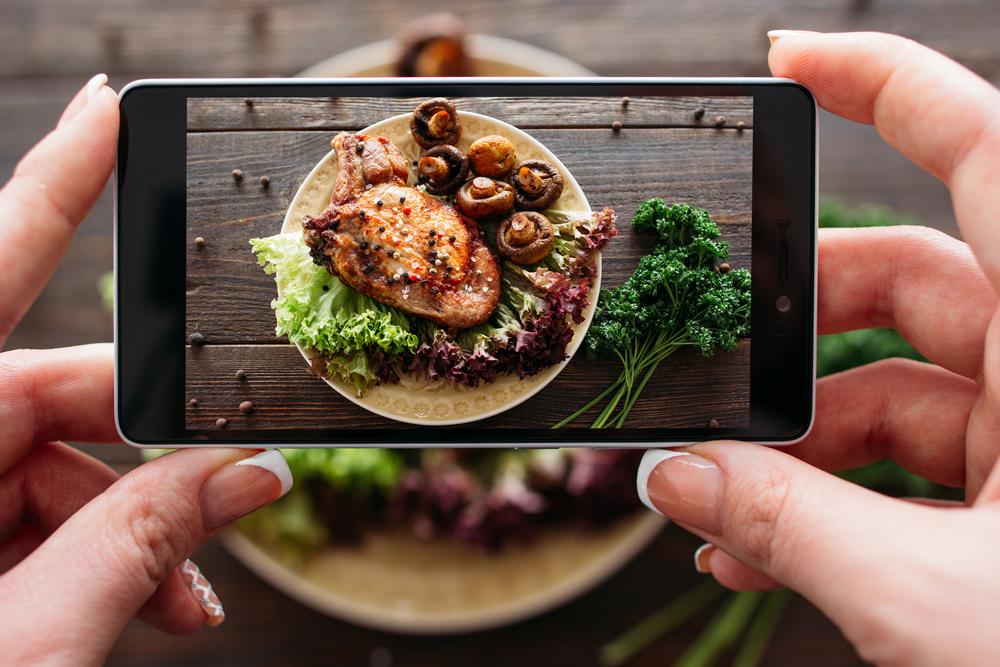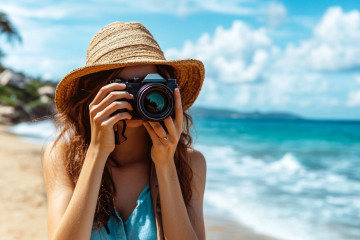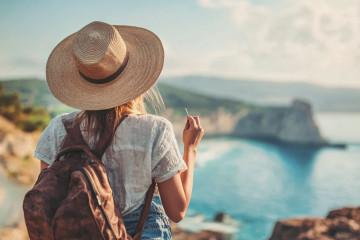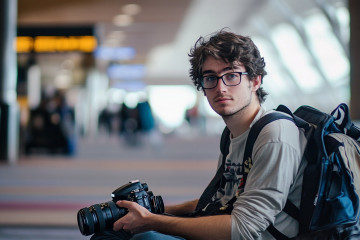As well as portraits and shots of beaches why not take a few photos of the plates of food you purchase? After all, getting your smartphone out before you chow down is the normal thing to do nowadays, isn’t it?
It’s coming up to that time of year when many families start to think about jetting off to warmer climates or simply heading to the Britsh coast to escape reality for a while. An accessory that’s guaranteed to be packed is a camera but instead of just capturing shots of family members in pools and on the beach, why not turn your attention to food photography and capture some mouth-watering images of the plates you’re served and stalls you pass on trips.
1. Where Will You Be Taking Your Photos?
Where you’re working can sometimes determine what equipment you can use. If you’re in a busy restaurant there’s probably not room for a tripod so you’ll have to work hand-held or use a smaller support that can fit on the table. But if you’re out in the street photographing food stalls and the people who run them, they’ll be more room to use a tripod, although if you plan on moving around a lot, you’ll probably better taking a monopod with you as they’re easier to walk with and take up less room.
2. Think About Presentation
Restaurants want to impress you so food is, generally, presented and displayed well already which means you don’t have to play the role of the designer. Do look out for attractive produce though, particularly if you’re at a hotel where you can serve yourself. Make sure fruit isn’t bruised and colours are vibrant. If you’re photographing meat make sure it’s not overcooked and lookout for herbs and pepper grinders as a sprinkling of pepper or a few green leaves can make your photograph looking more appetising. Also, look out for crumbs and sauce that may be sat on the side of the plate as this can distract the viewer.
3. Consider Using Repetition
If you can pick your own food, repetition works well and three items on a plate will often look better than two. Don’t think you always have to centre your subject and if you’re working with tall items such as ice creams and coffees in glasses, switch your orientation to portrait.
4. Backgrounds Shouldn’t Distract
Try and keep your background uncluttered but if you’re in a busy restaurant where this isn’t possible, just use a wide aperture to throw the background out of focus or you could try placing a plain jacket/cloth over a chair and positioning so it sits in the background of your shot. If the chairs are too low use the back of a menu, so long as it’s plain, as your background, placing it behind your plate. If it’s coloured make sure there’s no colour cast on your food/plate, particularly if the crockery is white and a shallow depth of field will help keep all attention on the food in the foreground of your shot.
Don’t forget to take some wider shots of the serving area too. In hotels particularly you’ll find several buffet carts, chefs preparing food and guests deciding what to eat which can make interesting shots.
5. Stick To Natural Light
Use natural light where possible so if you can pick where you sit, choose a window seat or better still, sit outside. You need to avoid using direct flash as your food won’t look very appetising so make sure you’ve switched it off, particularly in low light situations where some flashes will automatically fire.
6. Get Out On The Street
Away from restaurants, you can find small stalls, especially in markets, that make and sell food. If you want to snap a few shots of the stallholder it can help if you actually show some interest in the food they are producing. It’s not always advised to eat the food they’re cooking but you can ask them questions and spend some time actually appreciating their skill. If you’re working close up never shoot without asking permission first and if they say no, just move on to another stall instead of arguing with them. For those who do agree, fill the frame with their face as you’ll find they’ll create plenty of interesting expressions when concentrating on getting their creation perfect.
If your subject is working under a canopy your camera can get confused by the brighter space that surrounds them and your shot can end up a little dark. If this is the case, just lock your exposure and recompose the shot.
If the weather’s not playing ball or you’re on a street that’s shaded from the sun don’t be tempted to use your flash as this can destroy the feeling/atmosphere you’re trying to create. Just try using a wider aperture or a higher ISO and if you find the higher ISOs make your shot a little grainy, try turning the shot black and white as it can work rather well.
Another option is to use a tripod and slower shutter speeds which will blur the movement of anyone who passes through your shot, however, if you’re focusing on someone who is moving between a chopping board and a stove, the blur can emphasise the speed they’re working at. The slower shutter speeds can also be used to capture a few closer shots of flames, just make sure you don’t burn yourself and don’t catch any hot plates and pans by mistake.



